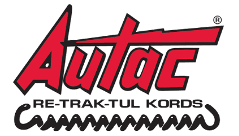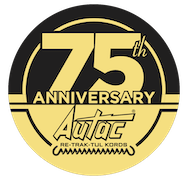A curly power cord, also known as a coiled power cable, is a type of electrical cable characterized by its helical or spring-like structure. These cords are designed to stretch and retract, offering flexibility, space-saving convenience, and resistance to tangling. They are commonly used in environments where mobility and compactness are essential, such as in medical equipment, industrial machinery, automotive electronics, and consumer electronics. The ability of curly cords to extend when pulled and return to their original coiled shape when released makes them highly valuable in dynamic settings.
Construction And Design
The basic structure of a curly power cord consists of the following components:
1. Conductors
Curly Power Cord typically contain copper conductors, as copper offers excellent conductivity and flexibility. The number of conductors can vary depending on the application—ranging from two-conductor cables for basic power delivery to multi-conductor variants for combined power and data transmission.
2. Insulation
Each copper conductor is insulated with a non-conductive material like PVC (polyvinyl chloride), TPE (thermoplastic elastomer), or rubber. The insulation prevents electrical short circuits and protects the conductors from mechanical damage and environmental exposure.
3. Coiling Process
The cable is mechanically coiled into a helical shape using specialized equipment. This coiling allows the cord to extend several times its original length and retract automatically when tension is released. The pitch, or spacing of the coils, can be adjusted depending on the required extension length and flexibility.
4. Outer Jacket
The entire bundle of insulated wires is covered with a durable outer jacket made from materials like polyurethane (PU), thermoplastic elastomer, or reinforced rubber. The outer jacket enhances mechanical strength and resists abrasion, oil, chemicals, and UV radiation.
Materials Used
- Copper: Preferred for its excellent electrical conductivity and ductility.
- PVC: Common for insulation due to its affordability, flexibility, and flame resistance.
- TPE and TPU: More advanced materials that offer enhanced flexibility, chemical resistance, and durability.
- Polyurethane (PU): Offers superior abrasion resistance and elasticity, commonly used for outdoor and rugged industrial environments.
Applications Of Curly Power Cords
Curly power cords are widely used across different industries because of their flexibility and durability:
1. Medical Equipment
In hospitals and clinics, coiled cords are used for devices like ECG machines, defibrillators, patient monitors, and other handheld instruments. The coil design prevents tripping hazards and allows easy movement of medical devices around the patient.
2. Industrial Machinery
In factories and workshops, curly cords are used for power tools, robotic arms, welding equipment, and control panels. The retractable nature ensures that cords stay out of the way of moving machinery, reducing the risk of entanglement and damage.
3. Automotive and Transportation
These cords are used in vehicles for power delivery to accessories like trailer lights, CB radios, and coiled charging cables. In public transport systems like trains and buses, they help power communication or control systems in constrained spaces.
4. Consumer Electronics
In offices and homes, curly cords are used in phone handsets, kitchen appliances, computer peripherals, and retractable power cords for vacuum cleaners or hairdryers. The coiled shape keeps workspaces tidy and manageable.
5. Military and Aerospace
In rugged and compact environments like aircraft cockpits and military field equipment, coiled cables ensure reliability, space optimization, and resistance to harsh conditions.
Advantages Of Curly Power Cords
1. Space Efficiency
Coiled cords occupy less space when retracted, making them ideal for environments with limited room. This compactness helps in managing clutter and maintaining a clean workspace.
2. Flexibility and Reach
Curly cords can extend several times their original length, offering flexibility and freedom of movement. This is especially useful for mobile devices or equipment that needs to be repositioned frequently.
3. Self-Retracting Functionality
After being stretched, the cord automatically returns to its coiled shape without external force. This reduces wear-and-tear and increases the lifespan of the cable.
4. Tangle Resistance
Due to their structure, curly cords are less likely to tangle or knot compared to straight cables, reducing damage and downtime.
5. Safety
By retracting when not in use, curly cords reduce tripping hazards and the risk of electrical accidents caused by damaged or frayed wires.
Customization And Specifications
Curly cords can be customized based on the application and environment:
- Length: Available in various retracted and extended lengths.
- Conductor Size: Ranges from small gauge for signal transmission to larger gauge for high power delivery.
- Coil Diameter and Pitch: Determines the extension capacity and retraction force.
- Color Coding: Outer jackets and conductor insulations can be color-coded for easy identification.
- Shielding: Some curly cords have braided or foil shielding for EMI (electromagnetic interference) protection.
- Connector Types: Custom connectors such as plugs, sockets, and terminals can be added based on the application.
Safety And Compliance
Safety is a critical aspect of curly power cord manufacturing and usage:
1. Regulatory Standards
Reputable manufacturers ensure compliance with international standards such as:
- UL (Underwriters Laboratories)
- CSA (Canadian Standards Association)
- RoHS (Restriction of Hazardous Substances)
- CE (Conformité Européenne)
2. Fire Resistance
Cables designed for industrial or medical environments often feature flame-retardant materials to minimize fire risks.
3. Durability Testing
Before deployment, cords undergo rigorous testing for:
- Flexural endurance (repeated coiling/uncoiling)
- Temperature resistance
- Abrasion resistance
- Moisture and chemical resistance
Limitations And Considerations
Despite their advantages, curly power cords have some limitations:
- Cost: Coiled cords are generally more expensive than straight cables due to the added manufacturing processes and materials.
- Weight: Depending on the material and size, coiled cords may be heavier than straight cords, affecting portability.
- Overstretching: Excessive extension beyond the recommended range can damage the cord, reducing its lifespan.
- Limited Cable Types: Not all cable types can be effectively coiled, especially those with stiff shielding or bulky construction.
Conclusion
Curly power cords are an essential component in modern electrical and electronic systems. Their ability to combine flexibility, space efficiency, and safety makes them ideal for applications that demand dynamic movement and compact storage. Whether used in a medical setting, an industrial facility, a vehicle, or a home, these cords offer practical and durable solutions for power transmission. By understanding their construction, advantages, and appropriate usage, consumers and engineers alike can make informed choices to enhance performance, safety, and convenience in their electrical setups.




Recent Comments